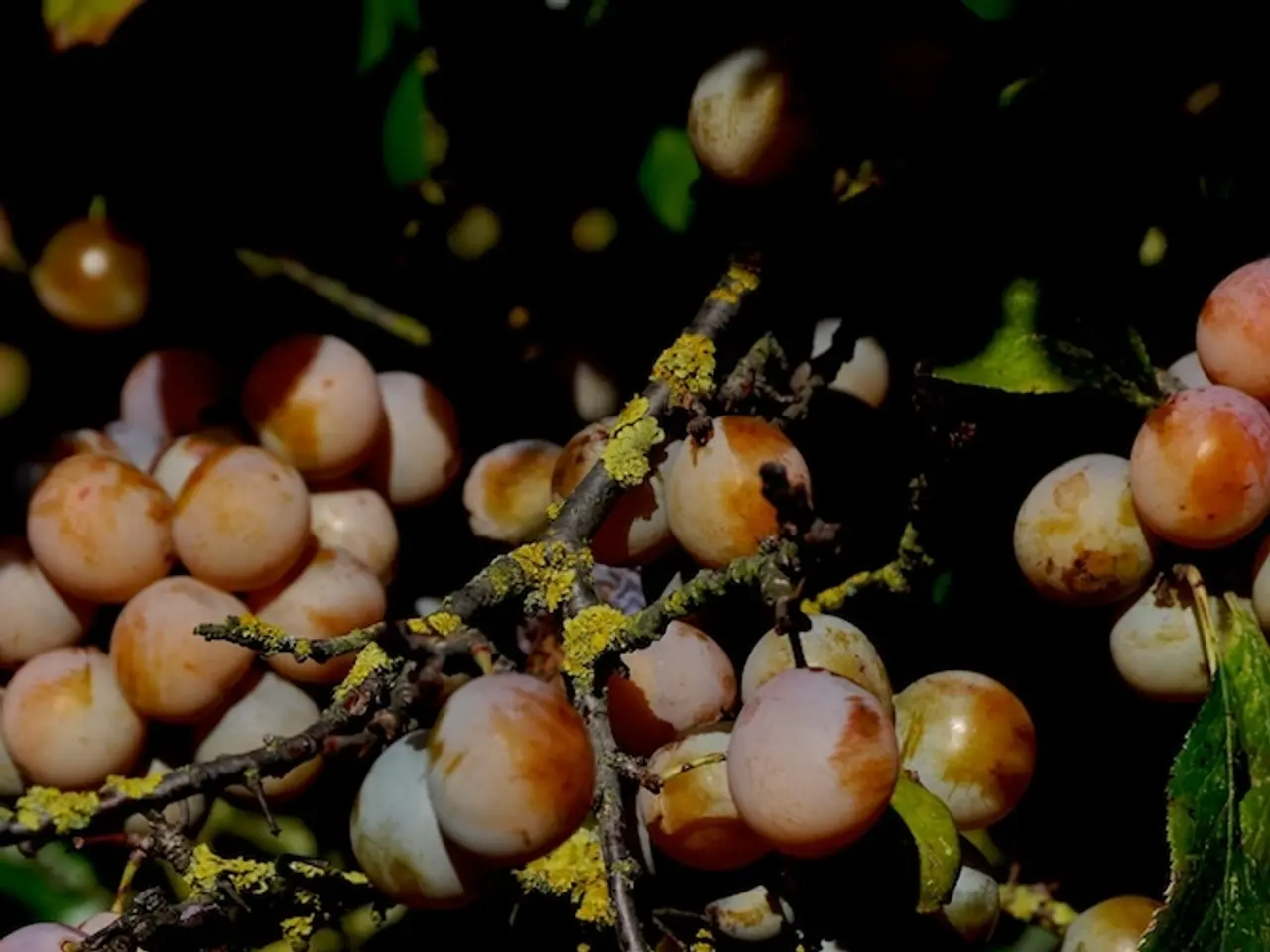Autumn Harvest: Over 100 Edible Finds in the Wild
================================================================
Autumn is a season of abundance, and the woods, fields, lakeshores, ponds, and gardens are teeming with edible delights. This article provides a comprehensive guide to the various wild foods that can be found during the fall.
Edible Greens
Lamb's Quarters Seeds (Chenopodium album), Plantain Seeds (Plantago spp.), and Queen Anne's Lace (Daucus carota) are just a few of the wild seeds available for foraging during the fall. These greens are not only nutritious but also add a unique flavour to your meals.
Roots and Tubers
The cool season brings renewed flushes of greens, but it's also a great time to dig up roots and tubers. Dock Seeds (Rumex spp.) and Sunflower Seeds (Helianthus spp.) are wild edible seeds that can be gathered in the fall. Roots like Cattail Roots (Typha spp.) and Arrowhead or Duck Potato (Sagittaria latifolia) can be found in ponds and water bodies.
Edible Trees
Fall is a good time to be out in the woods as temperatures cool off, bugs disappear, and foliage shows off its colours. Wild Nuts like Acorns (Quercus spp.), Beachnuts (Fagus spp.), Butternuts (Juglans cinerea), Chestnuts (Castanea spp.), Hazelnuts (Corylus spp.), Hickory Nuts (Carya spp.), Pecans (Carya illinoinensis), Pine Nuts (Pinus spp.), Walnuts (Juglans spp.), and fruits like persimmons, apples, and pawpaws, are all ripe for the picking.
Edible Seeds & Grains
It's a great time to stock up on nuts, roots, tubers, seeds, and grains that can bulk up your diet. Black Medic (Medicago lupulina) is a wild plant that can be found during the fall, offering nutritious seeds.
Wild Fruits
Fall brings an abundance of food to the land that can be gathered before the cold of winter. Wild fruits like American Persimmons (Diospyros virginiana), Apples (Malus spp.), Autumn Olives (Elaeagnus umbellata), Barberries (Berberis spp.), Blackberries (Rubus spp.), Blueberries (Vaccinium spp.), Chokecherries (Prunus virginiana), Chokeberries (Aronia spp.), Cranberries (Vaccinium macrocarpon), Elderberries (Sambucus spp.), Grapes (Vitis spp.), Hawthorn Berries (Crataegus spp.), Juniper Berries (Juniperus spp.), Nannyberries (Viburnum lentago), Pawpaws (Asimina triloba), Raspberries (Rubus spp.), Rosehips (Rosa spp.), Rowan Berries (Sorbus aucuparia), Sloes (Prunus spinosa), Staghorn Sumac Berries (Rhus typhina), Wild Plums (Prunus americana), Wild Raisin (Viburnum cassinoides) are all ripe and ready for harvest.
Pond, Bog, and Water Plants
Ponds and water bodies are not just a source of roots and tubers but also offer a variety of plants. Sweet Flag (Acorus calamus) is one such plant that can be found in these environments.
Fall Mushrooms
Nature is getting ready for winter, and fall brings in some of the most calorie-dense wild foods. Fall Mushrooms like Black Trumpet Mushrooms (Craterellus cornucopioides), Cauliflower Mushrooms (Sparassis spp.), Chicken of the Woods (Laetiporus sulphureus), Hedgehog Mushrooms (Hydnum repandum), Hen of the Woods or Maitake (Grifola frondosa), King Boletes (Boletus edulis), Lion's Mane (Hericium erinaceus), Oyster Mushrooms (Pleurotus spp.), Shaggy Mane Mushrooms (Coprinus comatus), Witches Butter (Tremella mesenterica), Dryad's Saddle or Pheasant Back (Cerioporus squamosus), Lobster Mushrooms (Hypomyces lactifluorum), Puffball Mushrooms (Calvatia spp.), Saffron Milk Caps (Lactarius deliciosus), Turkey Tail Mushrooms (Trametes veriscolor), Winecap or King Stropharia (Stropharia rugosoannulata), Yellowfoot Chanterelles (Craterellus tubaeformis), Coral Mushrooms (Ramaria spp. and Artomyces spp.), Honey Mushrooms (Armillaria spp.), Indigo Milk Cap (Lactarius indigo), Matsutake (Tricholoma matsutake), Shrimp of the Woods (Entoloma abortivum), Velvet Foot Mushrooms or Enoki (Flammulina velutipes) are just a few of the varieties that can be found.
Medicinal Plants
For those seeking medicinal plants, the fall season offers a variety of options. Plants like Angelica Root (Angelica sinensis), Chicory Root (Cichorium intybus), Dandelion Root (Taraxacum spp.), Echinacea Root (Echinacea spp.), Goldenrod (Solidago spp.), Joe Pye Weed (Eupatorium fistulosum), Mallow Root (Malva neglecta), Marshmallow Root (Altheaofficinalis), Motherwort (Leonurus cardiaca), Mugwort (Artemisia vulgaris), Mullein (Verbascum thapsus), Stinging Nettles (Urtica dioica), Teasel Root (Dipsacus fullonum), Wild Lettuce (Lactuca spp.), Yarrow (Achillea millefolium) are all known for their medicinal properties. Another plant commonly found in Western North American forests, traditionally used as a healing remedy in Native American medicine, is the Black Cohosh (Cimicifuga racemosa*).
So, grab your foraging basket and head out to enjoy the bounty that nature has to offer this fall! Remember to always be mindful of your surroundings and only harvest what is sustainably and legally available. Happy foraging!
Read also:
- Financial report from Mohegan reveals plans for restructuring debt on their INSPIRE resort project through refinancing.
- Beachgoers should be aware that potentially lethal "flesh-consuming bacteria" can survive in coastal environments. Here are safety precautions to follow.
- Elimination of Permitted Development Rights Advocated Across Industries
- Soil-to-Plant Expedition: The Ionic Trek






